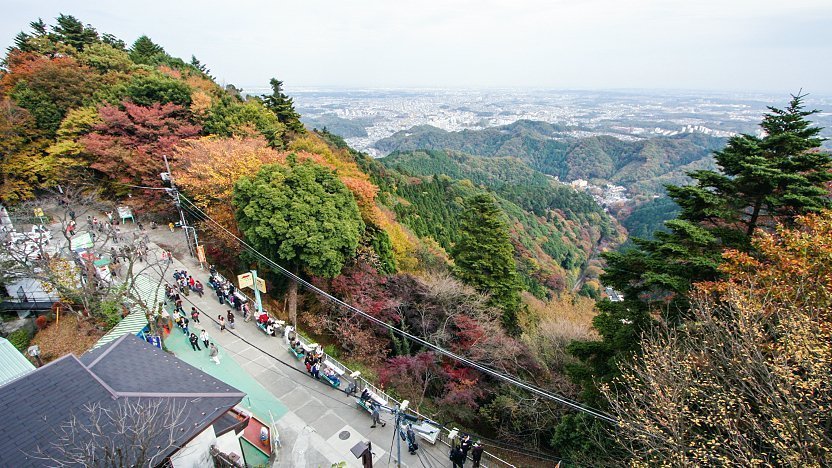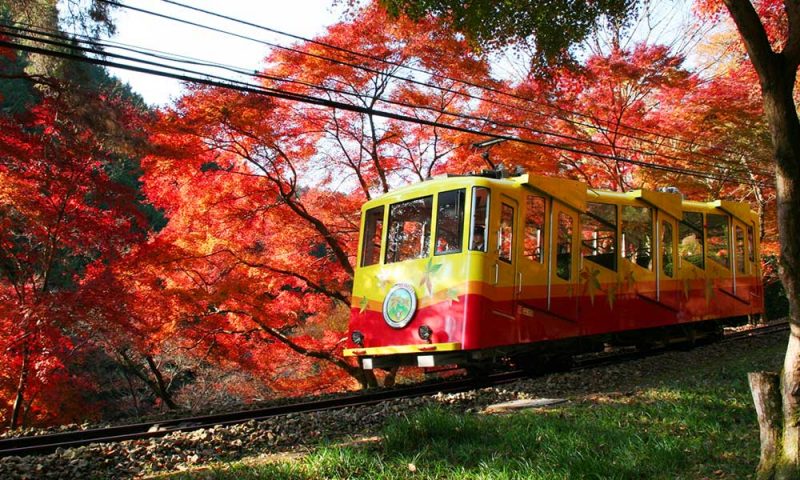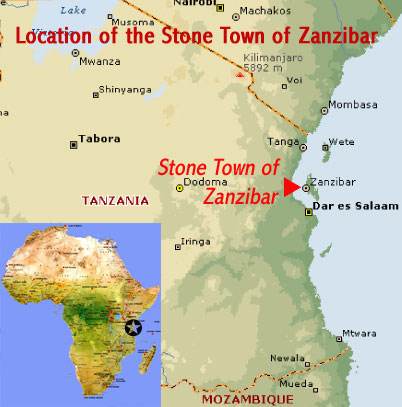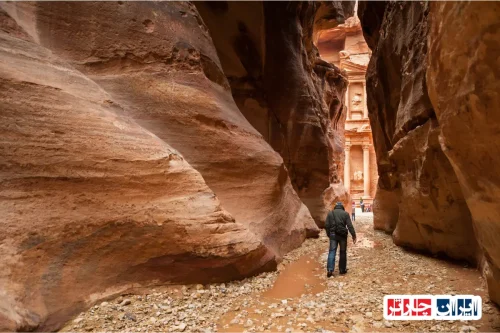Discover the Natural and Cultural Wonders of Mount Takao Tokyo Japan
Mount Takao Tokyo Japan stands out as a premier destination for nature lovers and cultural enthusiasts alike. Nestled just outside the bustling city of Tokyo, this mountain offers a perfect escape into lush forests, scenic trails, and historic temples. Visitors can enjoy a variety of hiking routes suitable for all levels, from leisurely walks to challenging climbs, each providing breathtaking views of the surrounding landscape. The area is also home to several sacred sites, including ancient temples that reflect Japan’s rich spiritual heritage. Whether you’re seeking tranquility, adventure, or cultural enrichment, Mount Takao Tokyo Japan provides an unforgettable experience that combines natural beauty with historical significance. For travelers interested in exploring this remarkable site, more information can be found at Mount Takao-Iran Charter. Discover the magic of Mount Takao Tokyo Japan and immerse yourself in its scenic trails, vibrant flora, and spiritual landmarks, making your visit a memorable journey into Japan’s natural and cultural heartland.

Discover Mount Takao Tokyo Japan: An Ultimate Guide to Nature and Culture Near Tokyo
Mount Takao Tokyo Japan stands as a premier destination for nature lovers and cultural enthusiasts alike. Located just outside the bustling city of Tokyo, this mountain offers a serene escape into lush forests, scenic trails, and historic temples. Visitors can enjoy a variety of outdoor activities such as hiking, bird watching, and photography, all while immersing themselves in the natural beauty of the region. The mountain’s elevation of 599 meters provides breathtaking panoramic views of Tokyo and beyond, making it an ideal spot for sightseeing and relaxation. Whether you’re seeking adventure or tranquility, Mount Takao Tokyo Japan caters to all interests, making it a must-visit location for travelers exploring the Tokyo area.
Exploring the Best Trails and Routes on Mount Takao Tokyo Japan
Mount Takao Tokyo Japan offers multiple hiking trails suitable for all levels of fitness and experience. The most popular route is the Omotesando Trail, a paved path lined with shops, cafes, and scenic viewpoints, perfect for families and casual hikers. For those seeking a more challenging experience, the Inariyama Trail provides a rugged, unpaved route that leads to the summit through dense forests and natural scenery. Other trails include the Biwa Waterfall Course and the Kobotoke Trail, each offering unique views and natural attractions. Regardless of the chosen path, hikers are rewarded with stunning vistas, fresh mountain air, and opportunities to observe local flora and fauna. Proper preparation, such as wearing comfortable shoes and carrying water, ensures a safe and enjoyable hike on Mount Takao Tokyo Japan.
Top Cultural and Religious Sites on Mount Takao Tokyo Japan
One of the highlights of Mount Takao Tokyo Japan is its rich cultural heritage, exemplified by the historic Yakuoin Temple, situated near the summit. This Buddhist temple, founded over a thousand years ago, attracts pilgrims and visitors seeking spiritual solace and cultural insight. The temple complex features traditional architecture, sacred statues, and beautiful gardens, offering a peaceful atmosphere for reflection. Additionally, the Takaosan Monkey Park provides an interactive experience with wild monkeys, emphasizing the mountain’s connection to nature and local folklore. Visitors can also explore smaller shrines and statues scattered along the trails, each with its own story and significance. These cultural landmarks enrich the mountain experience, blending natural beauty with spiritual and historical depth.
Seasonal Attractions and Best Times to Visit Mount Takao Tokyo Japan
The best time to visit Mount Takao Tokyo Japan depends on your interests and preferred scenery. Spring (March to May) is ideal for viewing cherry blossoms and vibrant wildflowers, creating picturesque landscapes. Summer (June to August) offers lush greenery and cooler mountain air, perfect for hiking and picnics. Autumn (September to November) is renowned for its stunning fall foliage, with fiery red and orange leaves transforming the mountain into a natural masterpiece. Winter (December to February) provides a quieter atmosphere and snow-covered scenery, great for photography and peaceful walks. Each season offers unique experiences, so planning your visit according to the desired scenery and weather conditions will ensure a memorable trip to Mount Takao Tokyo Japan.
Wildlife and Natural Beauty of Mount Takao Tokyo Japan
Mount Takao Tokyo Japan is home to diverse flora and fauna, making it a paradise for nature enthusiasts. The mountain’s forests host numerous bird species, including woodpeckers, warblers, and hawks, which can be observed during hikes. The rich plant life features ancient trees, colorful wildflowers, and medicinal herbs. Waterfalls, streams, and lush greenery add to the mountain’s scenic appeal, providing tranquil spots for relaxation and photography. The preservation of natural habitats is a priority, ensuring that visitors can enjoy the pristine environment and observe wildlife in their natural setting. Exploring the mountain’s ecological diversity offers a deeper appreciation of its ecological importance and scenic splendor.
Family-Friendly Activities and Facilities on Mount Takao Tokyo Japan
Mount Takao Tokyo Japan is an excellent destination for families, offering a range of accessible activities and facilities. The mountain features well-maintained paved paths suitable for strollers and young children. The Takaosan Monkey Park provides an engaging experience for kids to see monkeys up close, while the Mount Takao Cable Car offers a quick and scenic ride to the summit for those who prefer a less strenuous ascent. There are picnic areas, rest spots, and cafes where families can relax and enjoy local cuisine. Educational programs and nature walks are also available, making the mountain a fun and informative outing for all ages. With its family-friendly amenities, Mount Takao Tokyo Japan ensures a memorable adventure for visitors of every age group.
Environmental Conservation and Sustainable Tourism at Mount Takao Tokyo Japan
Protecting the natural environment of Mount Takao Tokyo Japan is essential for maintaining its beauty and ecological health. Conservation efforts include trail maintenance, habitat preservation, and educational programs to raise awareness among visitors. Sustainable tourism practices, such as encouraging the use of public transportation like the cable car and promoting responsible behavior, help minimize environmental impact. Local authorities and organizations work together to ensure that tourism benefits the community while safeguarding the mountain’s natural and cultural resources. Visitors are encouraged to follow guidelines, dispose of waste properly, and respect wildlife and sacred sites. By practicing eco-friendly habits, travelers can contribute to the preservation of Mount Takao Tokyo Japan for future generations to enjoy.
Practical Tips for Visiting Mount Takao Tokyo Japan
To make the most of your trip to Mount Takao Tokyo Japan, consider planning ahead. Wear comfortable hiking shoes, bring water and snacks, and check the weather forecast before heading out. The mountain is accessible year-round, but spring and autumn offer the most scenic views. Arriving early helps avoid crowds and allows ample time to explore various trails and attractions. If you prefer a leisurely experience, take the cable car or chair lift to reach the summit quickly. Remember to respect local customs and sacred sites, and carry out all trash to keep the environment pristine. With proper preparation, your visit to Mount Takao Tokyo Japan will be safe, enjoyable, and unforgettable.

FAQ about Mount Takao Tokyo Japan: Nature, Culture, and Travel Tips
- What makes Mount Takao a popular destination near Tokyo?
- Mount Takao offers a perfect blend of natural beauty, scenic hiking trails, and cultural sites like historic temples. Its proximity to Tokyo makes it an accessible escape for outdoor activities, sightseeing, and experiencing Japanese spirituality, attracting both nature lovers and cultural enthusiasts.
- How high is Mount Takao and what views can visitors expect?
- Standing at 599 meters, Mount Takao provides breathtaking panoramic views of Tokyo and the surrounding landscapes. Visitors can enjoy scenic vistas from various viewpoints along the trails, especially from the summit.
- What are the main hiking trails on Mount Takao?
- The most popular trail is the Omotesando Trail, which is paved and lined with shops and cafes. For a more challenging hike, the Inariyama Trail offers a rugged, unpaved route through dense forests. Other trails include the Biwa Waterfall Course and Kobotoke Trail, each offering unique natural scenery.
- Are there cultural or religious sites on Mount Takao?
- Yes, the historic Yakuoin Temple near the summit is a key cultural site, attracting pilgrims and visitors interested in Japanese spirituality. The mountain also features smaller shrines, statues, and the Takaosan Monkey Park, which connects visitors with local folklore and nature.
- When is the best time to visit Mount Takao?
- Spring (March-May) is ideal for cherry blossoms and wildflowers. Summer (June-August) offers lush greenery and cooler weather. Autumn (September-November) is famous for vibrant fall foliage. Winter (December-February) provides a quieter atmosphere and snow-covered scenery, perfect for photography.
- What wildlife can be seen on Mount Takao?
- The mountain is home to diverse bird species like woodpeckers, warblers, and hawks. Its forests also host various plants, wildflowers, and medicinal herbs. Waterfalls and streams add to the ecological richness, making it a haven for nature observation.
- Is Mount Takao suitable for families?
- Absolutely. The paved paths are stroller-friendly, and attractions like the Monkey Park and cable car make it accessible for children. There are picnic areas, cafes, and educational programs, making it a family-friendly destination.
- How can visitors ensure they preserve the environment during their trip?
- Visitors should follow conservation guidelines, use public transportation like the cable car, dispose of waste responsibly, and respect wildlife and sacred sites. Practicing eco-friendly habits helps protect the mountain’s natural beauty for future visitors.
- What practical tips are recommended for visiting Mount Takao?
- Wear comfortable hiking shoes, carry water and snacks, and check the weather forecast. Arrive early to avoid crowds and explore more trails. Using the cable car or chair lift can save time and energy. Respect local customs and carry out all trash.
- Are there facilities for visitors on Mount Takao?
- Yes, there are rest spots, cafes, and shops along the trails. The cable car station and summit area have amenities, and educational centers provide information about the mountain’s ecology and history.
- Can I see wildlife like monkeys on Mount Takao?
- Yes, the Takaosan Monkey Park allows visitors to observe wild monkeys in a controlled environment. The mountain itself also hosts various bird species and small mammals, especially in the forested areas.
- What are the main cultural experiences on Mount Takao?
- Visiting the historic Yakuoin Temple, participating in traditional rituals, and exploring shrines and statues along the trails provide deep cultural insights and spiritual experiences.
- Is it possible to hike Mount Takao year-round?
- Yes, the trails are accessible throughout the year. Each season offers unique scenery: cherry blossoms in spring, lush greenery in summer, colorful leaves in autumn, and snow in winter.
- What is the significance of Mount Takao in local culture?
- Mount Takao has been a spiritual site for centuries, with temples and shrines dedicated to Buddhist practices. It symbolizes harmony between nature and spirituality in Japanese culture.
- How does Mount Takao contribute to sustainable tourism?
- Efforts include maintaining trails, promoting eco-friendly transportation like cable cars, and educating visitors on conservation. These practices help preserve the mountain’s natural and cultural resources for future generations.
























